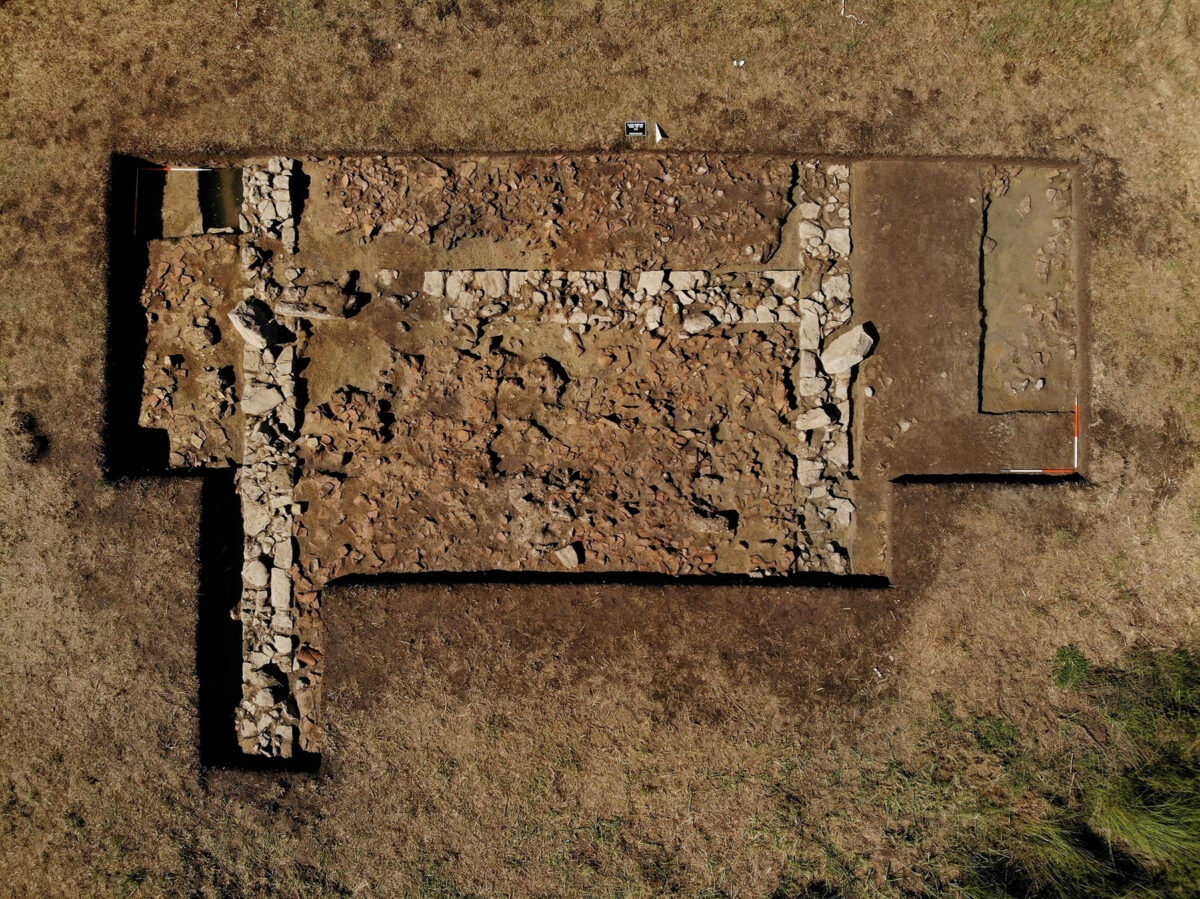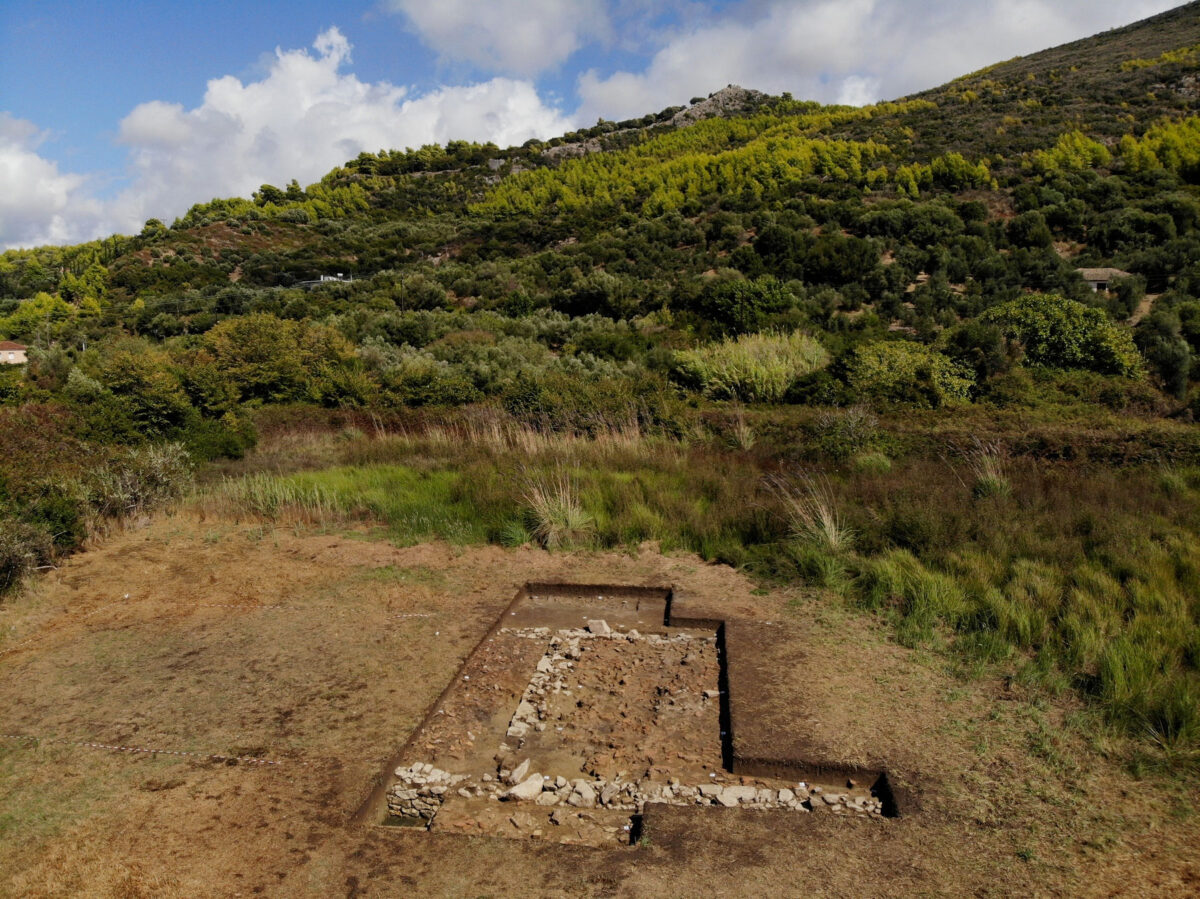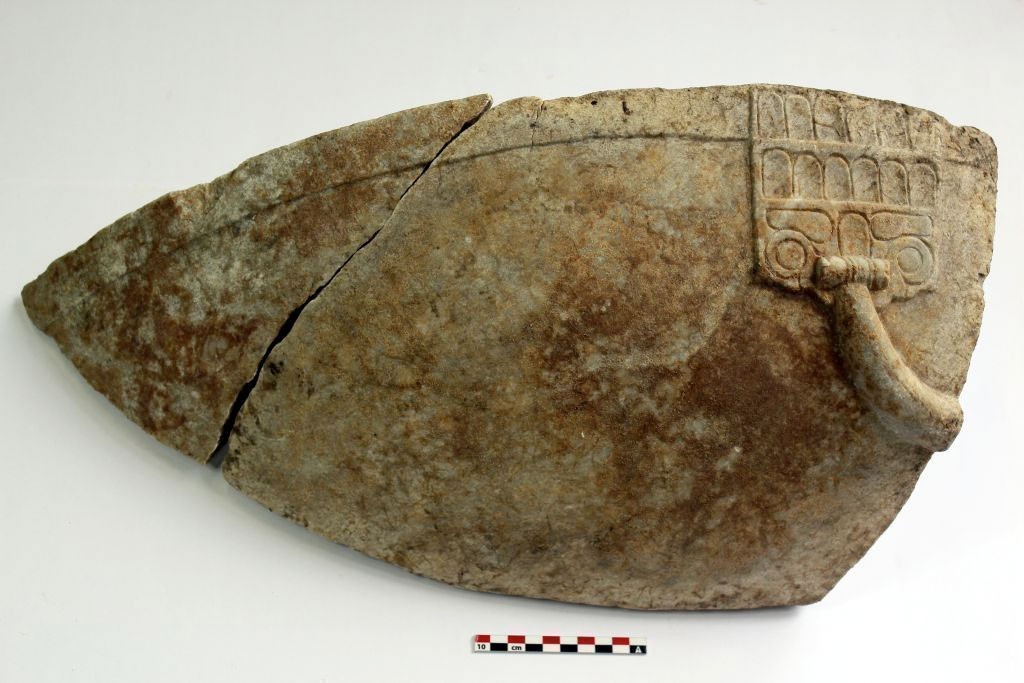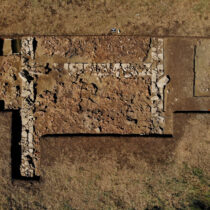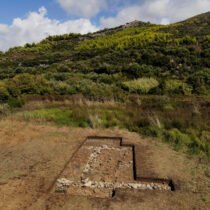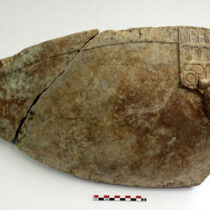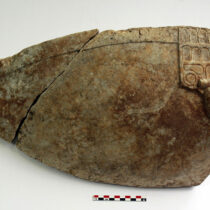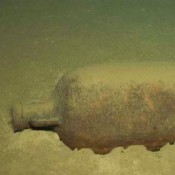Building remains that can be attributed to the sanctuary of Poseidon were located during this year’s first excavation season of the five-year research programme (2022-2026) in Kleidi, Samikos. The research project, aiming to investigate the topography of the area and identify the sanctuary of Poseidon and the port of Samikos, is a collaboration between the Ephorate of Antiquities of Ilia headed by Dr. Erofili Kollia and the Austrian Archaeological Institute of the Austrian Academy of Sciences, headed by Dr. Birgitta Eder. A geoarchaeological and geophysical research had been previously conducted in 2017, 2018 and 2021 by the Ephorate of Antiquities of Ilia and the Austrian Archaeological Institute in collaboration with the Universities of Mainz (Prof. Andreas Vött) and Kiel (Dr. Dennis Wilken).
The site of Kleidi, where the ancient temple-shaped building was found, had been suggested by earlier researchers as a possible location of the famous ancient sanctuary, as it is situated in the foothills of the ancient acropolis of Samikos, with a command of the area north of the Caiaphas lagoon on the west coast of the Peloponnese. In information provided by Strabo in his Geographica, Book 8, the sanctuary of Poseidon was an important cult center of the amphictyonic league of the cities of Triphylia and was situated near the sea, under the acropolis of Samikos.
Excavations were completed at the end of September and during their course part of the foundation of a large 9.40 m wide building was uncovered with 0.80 m thick walls. A compact layer of tiles was found inside. Based on the geophysical survey and the excavation data, a building of at least 28 m in length can be reconstructed, which had two inner chambers, as well as a pronaos and an opisthodomos or adyton. The elongated temple-shaped building probably belonged to the sanctuary of Poseidon and may possibly be identified as the god’s temple.
Combined with the laconian style of tiling, the discovery of part of a marble perrirhanterion leads us to initially date the building to the Archaic period. The marble basin, which imitates one made of copper, is a typical vessel used for worship,characteristic of a sanctuary. This discovery puts a new perspective on research of the political and economic importance of the amphictyonic league of the Triphylian cities during the 6th century BC, with the sanctuary of Poseidon being the center of their religious and national identity.
The research, funded by the Gerda Henkel Foundation and the Austrian Archaeological Institute (Austrian Academy of Sciences), will continue over the next years to further explore the sanctuary of Poseidon and the archaic temple.
